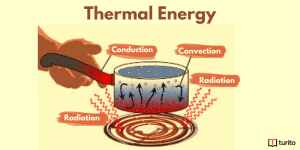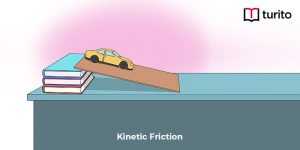Cyclotron
Overview
What is a cyclotron? Cyclotron is a name that makes us think of a fictional science movie character. It is a particle accelerator, a device that employs electromagnetic fields to accelerate charged particles to extremely high speeds and intensities. It is used to create radioisotopes for radiopharmaceuticals, a class of medications used to diagnose and treat cancer. The IAEA recently revised its interactive version and database with 1300 of these cyclotron stations from 95 different nations. There are more than 1500 cyclotron stations in the world.
Discovery of Cyclotron
Cyclotrons are a group of devices that propel charged subatomic or atomic particles in the existent magnetic field. In the early 1930s, the American physicists Ernest Orlando Lawrence and M. Stanley Livingston were the first to discover these kinds of particle accelerators.
Cyclotron Definition
A cyclotron can be defined as a kind of particle accelerator. The cyclotron accelerates charged particles by utilizing its alternating voltage (potential difference) and high frequency. The particles spiral almost in a circle due to a perpendicular magnetic field, repeatedly coming into contact with the accelerating voltage. The cyclotron was discovered in the early 1930s by Ernest Lawrence of the University of California, Berkeley, but others were already working on related projects.
Cyclotron definition: A cyclotron can accelerate particles over a longer range than a linear accelerator because it accelerates them over a spiral path. Cyclotrons generate ion beams to treat infected tissue and high-energy beams for nuclear physics investigations. They can also use them to saturate other atoms to create positron-emitting isotopes that are appropriate for short-term storage for PET imaging.
Did You Know?
|
How do Cyclotrons work?
A cyclotron is composed of two hollow semicircular electrodes, or “dees,” set back to back and separated by a small gap in an enclosed chamber between the poles of a magnet. A radio-frequency oscillator generates an electric field in the gap that alternates in polarity.
So, how do cyclotrons work? Charged particles are attracted and repelled by a high-frequency alternating voltage in the cyclotron when delivered across the “D” electrodes, commonly known as “dees.” The particles, introduced close to the magnetic field’s center, only begin to accelerate when they cross the electrode gap. Particles are forced to move in a spiral pattern by the perpendicular magnetic field, which passes vertically throughout the “D” electrodes and their expanding energy.
Without any alteration in energy level, the charged particles in a magnetic field will maintain a circular path throughout the process. The particles in the cyclotron are given energy as they pass through the space between the dees, which accelerates them (at the usual sub-relativistic speeds utilized) and causes them to gain mass as they move toward the speed of light. An increase in mass or velocity will increase the circle’s radius, which causes the pathway to spiral.
(The particles spiral due to the perpendicular force experienced by an electron or ion current flowing parallel to a magnetic field. In a vacuum, charged particles can travel freely, leading to their spiral motion.
The radius will grow until the particles collide with a target at the vacuum chamber’s edge. The target might be made of various materials and may send the secondary particles produced by the collisions outside the cyclotron or into analytical instruments. The findings will make it possible to calculate several properties, including the mean distance among atoms and the production of different collision products. The target material’s further chemical and particle analyses could provide information regarding the elements’ nuclear transformation.
| Did You Know?
Synchrocyclotron, which modify the voltage frequency after every cycle, and isochronous cyclotrons, which modify the magnetic field, are used to accelerate particles at relativistic speeds. These adjustments are made to counteract the accelerating particle’s growing mass as its speed approaches that of light. |
Formula for Cyclotron Frequency
A system that rotates a particle accelerator is called a cyclotron. A charged particle is propelled along the path in a cyclotron by the combined force of an alternating electric field and a static magnetic field. We need to understand the speed at which the particles activate the electric field to accelerate the particles. Cyclotron frequency is the name for this frequency.
Cyclotron can use the equation for the Lorentz force and centrifugal force to get the cyclotron frequency.
The cyclotron frequency equation is:
f = qB/ (2m)
Where,
- f = cyclotron frequency
- q = charge of the particle
- m = mass of the particle
- B = magnetic field’s strength
Cyclotron Velocity: A particle traveling in a circle at cyclotron frequency is known as cyclotron velocity.
| Solved illustration: A particle with a mass of 10 u and a charge of 15 e travels in a circle while subjected to a 5 T static magnetic field. Find the accelerating particle’s cyclotron frequency.
Solution: Based on the information, The particle’s charge is q = 15 e. The particle’s mass is m = 10 u. The magnetic field strength is B = 5 T Cyclotron frequency is calculated as f = qB/(2m) f = (15 x 5)/(2 x 10) f = 75/20 = 3.75. Consequently, 3.75 MHz is the cyclotron frequency. |
Uses of Cyclotron
A cyclotron is a particle accelerator where charged particles are driven by an oscillating electric field and a steady magnetic field. Additionally, it is utilized to create radioactive isotopes for nuclear medicine and imaging treatments. The particles are introduced at the magnet’s core, and as their strength grows, they spiral outward. A charged particle is typically driven along a spiral route in a standard cyclotron under an oscillating electric field and a static magnetic field. The accelerated particles often have an energy of more than 10 MeV.
Uses of Cyclotron: Cancer treatment
- Proton therapy uses a cyclotron (wherein a beam of focussed protons is aimed at the tumor-affected area). The use of proton therapy is widespread in pediatric patients. It can also be used to treat a variety of cancers, including prostate cancer, sarcoma, breast cancer, brain tumors, and spine tumors. A powerful beam of protons from the cyclotron is directed at the tumor by passing through the skin.
- Radioisotopes, frequently utilized in medicine and imaging, can also be produced via cyclotron.
Uses of Cyclotron: Scientific research
- Due to their capacity for cancer detection, radiopharmaceuticals made in cyclotrons are the subject of extensive research. Early tumor diagnosis is crucial for cancer research since it increases the effectiveness of the therapy procedure.
- Scientists use Cyclotrons in nuclear physics experiments, where accelerated charged particles are used to assault atomic nuclei.
- The nuclear structure can also be altered using cyclotrons.
- It is used in research contexts to quantify the mass, half-life, interaction cross-sections, and decay patterns of isotopes, particularly short-lived radioactive isotopes.
Conclusion
So, what is a cyclotron? A cyclotron is a particle or ion accelerator where a proton beam is repeatedly propelled in a circular route. Stable isotopes, non-radioactive materials, are impacted by these protons to create medical radioisotopes. The stable isotopes undergo a nuclear reaction when they come into contact with the proton beam, turning them into radioactive isotopes (radioisotopes).
Some medical facilities have their own cyclotrons and on-site radioisotope production facilities, which they use to create radiopharmaceuticals that patients can use immediately. Key radioisotopes like Gallium-68 (Ga-68) and Technetium-99m (Tc-99m) are now also synthesized in cyclotrons due to recent developments in the sector.
Frequently Asked Questions (FAQ’s)
1.What are cyclotron limitations?
The cyclotron has some limitations, which are described below:
- Due to their extremely low mass, electrons cannot be accelerated by cyclotrons.
- Cyclotrons cannot accelerate neutral particles.
- Due to the relativity effect, it cannot propel protons (positively charged particles) with significant mass.
- Because the radioisotopes produced by cyclotrons are not very stable, the application site must be quite near to the cyclotron.
- The intensity of the beam is likewise restricted. Electrostatic repulsion strengthens and can potentially disturb the orbits of nearby particles as the number of particles in the beam rises.
2.List some applications for cyclotrons.
For many years, cyclotron has been used as the primary guide for nuclear physics investigations in high-energy beams. Various cyclotrons are already in operation for these kinds of investigations.
Cyclotrons can treat cancer. Like proton treatment, ion beams from cyclotrons can be utilized to infiltrate the body and eliminate tumors via radiation damage while causing the least harm to normal tissue along their course.
Cyclotron beams can target other atoms to create positron-emitting isotopes with short half-lives that are good for PET imaging.
3.What are the advantages of the cyclotron?
The following are some cyclotron benefits:
- Because cyclotrons only require one electrical driver, they consume less power and money, which frees up resources for efficiency improvements.
- The overall power is relatively significant in cyclotrons because a stream of particles constantly targets the target.
- The device’s compactness lowers additional expenditures associated with its radiation shielding, foundations, and surrounding structure.

Relevant Articles
Understanding Thermal Energy: What It Is and How It Works
Thermal energy is essential to our daily lives, from warming …
Understanding Thermal Energy: What It Is and How It Works Read More »
Read More >>Avogadro’s Number: Meaning, Importance, and More
Introduction The concept of measuring the microscopic particles that make …
Avogadro’s Number: Meaning, Importance, and More Read More »
Read More >>Kinetic Friction – Definition, Laws, Types
Kinetic Friction Kinetic force is a force acting between two …
Kinetic Friction – Definition, Laws, Types Read More »
Read More >>




















Comments: